Jonas Schuff
Meta-learning characteristics and dynamics of quantum systems
Mar 13, 2025Abstract:While machine learning holds great promise for quantum technologies, most current methods focus on predicting or controlling a specific quantum system. Meta-learning approaches, however, can adapt to new systems for which little data is available, by leveraging knowledge obtained from previous data associated with similar systems. In this paper, we meta-learn dynamics and characteristics of closed and open two-level systems, as well as the Heisenberg model. Based on experimental data of a Loss-DiVincenzo spin-qubit hosted in a Ge/Si core/shell nanowire for different gate voltage configurations, we predict qubit characteristics i.e. $g$-factor and Rabi frequency using meta-learning. The algorithm we introduce improves upon previous state-of-the-art meta-learning methods for physics-based systems by introducing novel techniques such as adaptive learning rates and a global optimizer for improved robustness and increased computational efficiency. We benchmark our method against other meta-learning methods, a vanilla transformer, and a multilayer perceptron, and demonstrate improved performance.
Fully autonomous tuning of a spin qubit
Feb 06, 2024



Abstract:Spanning over two decades, the study of qubits in semiconductors for quantum computing has yielded significant breakthroughs. However, the development of large-scale semiconductor quantum circuits is still limited by challenges in efficiently tuning and operating these circuits. Identifying optimal operating conditions for these qubits is complex, involving the exploration of vast parameter spaces. This presents a real 'needle in the haystack' problem, which, until now, has resisted complete automation due to device variability and fabrication imperfections. In this study, we present the first fully autonomous tuning of a semiconductor qubit, from a grounded device to Rabi oscillations, a clear indication of successful qubit operation. We demonstrate this automation, achieved without human intervention, in a Ge/Si core/shell nanowire device. Our approach integrates deep learning, Bayesian optimization, and computer vision techniques. We expect this automation algorithm to apply to a wide range of semiconductor qubit devices, allowing for statistical studies of qubit quality metrics. As a demonstration of the potential of full automation, we characterise how the Rabi frequency and g-factor depend on barrier gate voltages for one of the qubits found by the algorithm. Twenty years after the initial demonstrations of spin qubit operation, this significant advancement is poised to finally catalyze the operation of large, previously unexplored quantum circuits.
The Automated Bias Triangle Feature Extraction Framework
Dec 05, 2023



Abstract:Bias triangles represent features in stability diagrams of Quantum Dot (QD) devices, whose occurrence and property analysis are crucial indicators for spin physics. Nevertheless, challenges associated with quality and availability of data as well as the subtlety of physical phenomena of interest have hindered an automatic and bespoke analysis framework, often still relying (in part) on human labelling and verification. We introduce a feature extraction framework for bias triangles, built from unsupervised, segmentation-based computer vision methods, which facilitates the direct identification and quantification of physical properties of the former. Thereby, the need for human input or large training datasets to inform supervised learning approaches is circumvented, while additionally enabling the automation of pixelwise shape and feature labeling. In particular, we demonstrate that Pauli Spin Blockade (PSB) detection can be conducted effectively, efficiently and without any training data as a direct result of this approach.
Identifying Pauli spin blockade using deep learning
Feb 01, 2022



Abstract:Pauli spin blockade (PSB) can be employed as a great resource for spin qubit initialisation and readout even at elevated temperatures but it can be difficult to identify. We present a machine learning algorithm capable of automatically identifying PSB using charge transport measurements. The scarcity of PSB data is circumvented by training the algorithm with simulated data and by using cross-device validation. We demonstrate our approach on a silicon field-effect transistor device and report an accuracy of 96% on different test devices, giving evidence that the approach is robust to device variability. The approach is expected to be employable across all types of quantum dot devices.
Neural-Network Heuristics for Adaptive Bayesian Quantum Estimation
Mar 04, 2020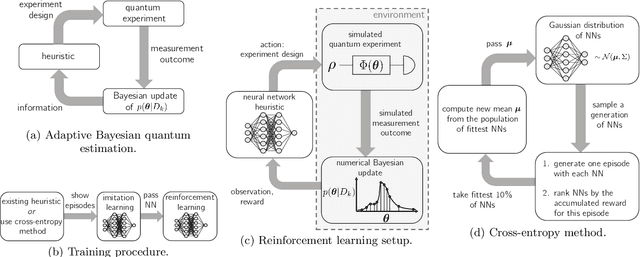
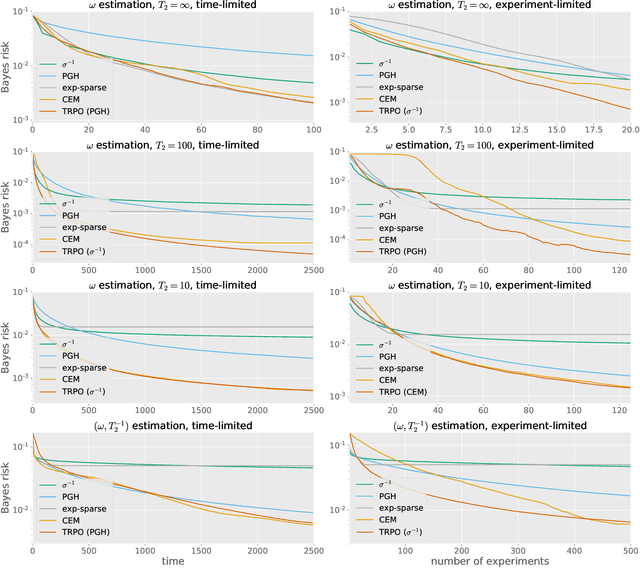

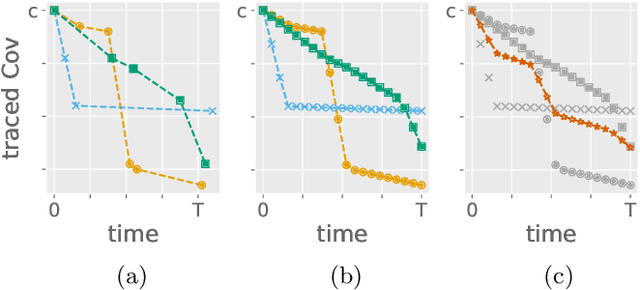
Abstract:Quantum metrology promises unprecedented measurement precision but suffers in practice from the limited availability of resources such as the number of probes, their coherence time, or non-classical quantum states. The adaptive Bayesian approach to parameter estimation allows for an efficient use of resources thanks to adaptive experiment design. For its practical success fast numerical solutions for the Bayesian update and the adaptive experiment design are crucial. Here we show that neural networks can be trained to become fast and strong experiment-design heuristics using a combination of an evolutionary strategy and reinforcement learning. Neural-network heuristics are shown to outperform established heuristics for the technologically important example of frequency estimation of a qubit that suffers from dephasing. Our method of creating neural-network heuristics is very general and complements the well-studied sequential Monte-Carlo method for Bayesian updates to form a complete framework for adaptive Bayesian quantum estimation.
Improving the dynamics of quantum sensors with reinforcement learning
Aug 22, 2019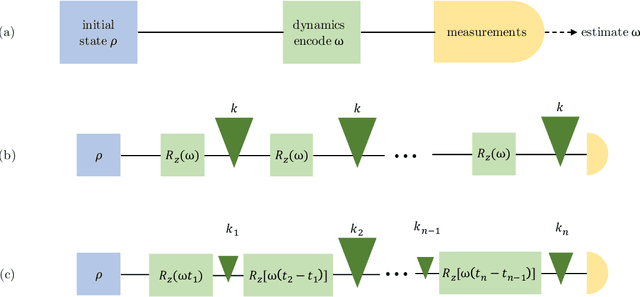
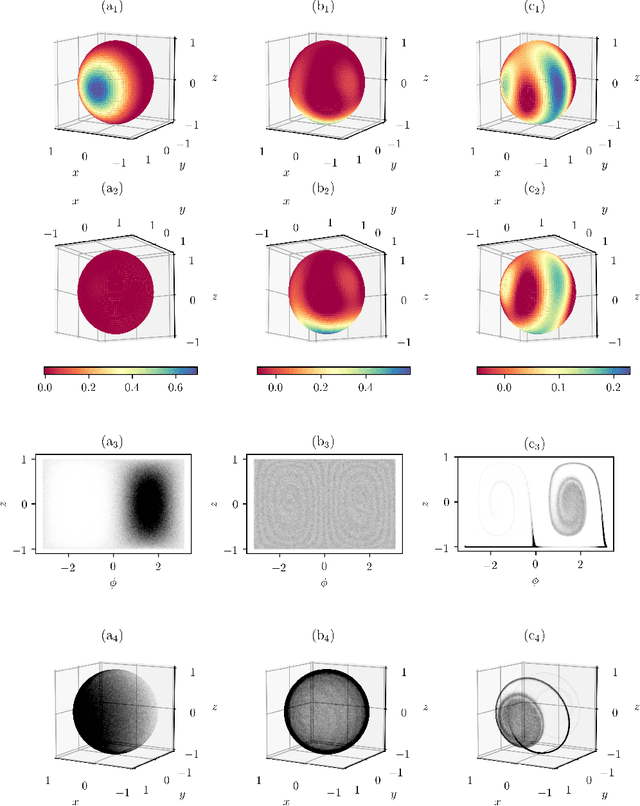
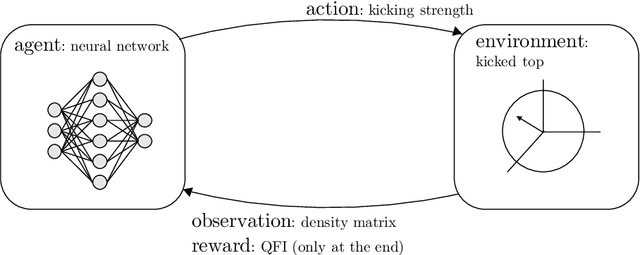
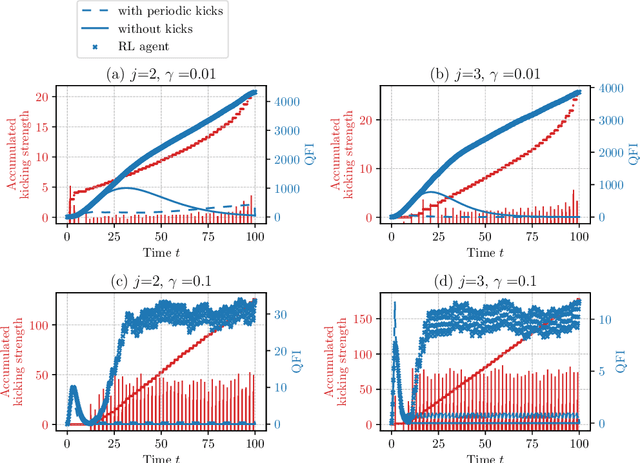
Abstract:Recently proposed quantum-chaotic sensors achieve quantum enhancements in measurement precision by applying nonlinear control pulses to the dynamics of the quantum sensor while using classical initial states that are easy to prepare. Here, we use the cross entropy method of reinforcement learning to optimize the strength and position of control pulses. Compared to the quantum-chaotic sensors in the presence of superradiant damping, we find that decoherence can be fought even better and measurement precision can be enhanced further by optimizing the control. In some examples, we find enhancements in sensitivity by more than an order of magnitude. By visualizing the evolution of the quantum state, the mechanism exploited by the reinforcement learning method is identified as a kind of spin-squeezing strategy that is adapted to the superradiant damping.
 Add to Chrome
Add to Chrome Add to Firefox
Add to Firefox Add to Edge
Add to Edge